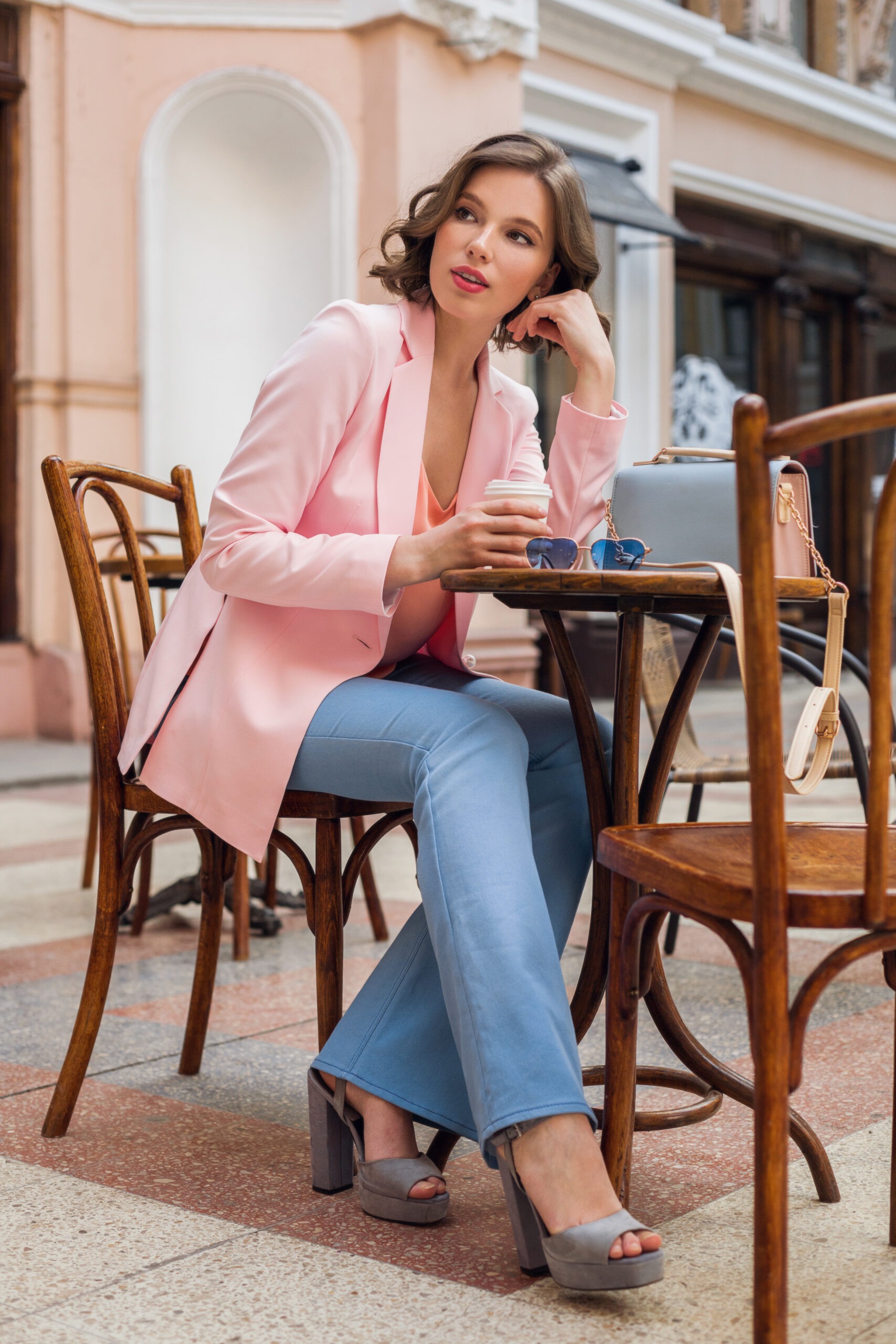
Pink Blazer Outfit Ideas
Introduction
The pink blazer is a fashion favorite that continues to hold its own in closets everywhere. It’s versatile, polished, and adds a pop of color to any outfit—perfect for dressing up or down. Whether you’re heading to the office, going out for coffee, or meeting up with friends for brunch, a pink blazer can be the standout piece that pulls your look together. In this blog, we’re diving into some creative and stylish pink blazer outfit ideas that just about anyone can pull off!
Why Choose a Pink Blazer?
I was never a fan of bright colors but now that I am in my 30s, I am taking full advantage of stepping outside the box. I challenge you to do the same. Experimenting with different colors, patterns, and silhouettes will help you to discover new styles that you may love. A pink blazer isn’t just about making a statement—it’s about feeling confident and put together. Here’s why it’s worth adding to your wardrobe:
- Feminine but powerful: It combines softness with structure.
- Seasonless style: Works in spring, summer, and even fall.
- Outfit versatility: Dress it up for work or down for casual outings.
- Tons of shades: From blush to hot pink, there’s a tone for everyone.
How to Style a Pink Blazer
Pink Blazer Outfit Ideas for Work
You don’t have to limit yourself to navy or black for office wear. A pink blazer can be both professional and playful.
Shop Similar: High Waist Trousers | Belt | Blazer | Top
Shop Similar: Blazer | Blouse | Pencil Skirt | Heeled Sandal
Shop Similar: Pants | Pink Blazer | Bodysuit | Crossbody Bag
Shop Similar: Blouse | Blazer | Jeans | Handbag
Pink Blazer Outfit Ideas for Casual Weekends
Yes, you can totally rock a blazer on the weekend. Here’s how to keep it relaxed yet stylish.
Shop Similar: Blazer | Graphic Tee | Loafers | Jeans
Shop Similar: Bodysuit | Blazer | Pants | Shoes
Shop The Look: Blazer | Handbag | Jeans | Top | Gold Studs | Sneakers | Sunglasses
Brunch or Day Out with Friends
Brunch is the perfect time to wear a pink blazer. It brings a fresh, light feel that fits right in with mimosas and sunny mornings. Not to mention you can wear it for the remainder of the day to run light errands. You’ll receive complements like crazy with these outfit ideas!
Shop Similar: Shorts | Crop Top | Blazer | Sunglasses
Disclosure: Some of the links in this post are ‘affiliate links’. This means if you click on the link and purchase the item, I will receive an affiliate commission.
Shop Similar: Blazer | Lightweight Jeans | Satin Blouse
Pink Blazer Outfit Ideas for Date Nights
If you are looking to add a pop of color for a date night, a pink blazer can do the trick. A soft pink symbolizes femininity, gentleness, and romance. Your date will want to skip dinner altogether once he sees you in these stunning pink blazer outfits!
Shop the Look: Jeans | Crop Top | Blazer | Clutch | Pumps
Shop Similar: Blazer | Jumpsuit | Heels
Valentines Day Pink Blazer Outfit
What Colors Go with a Pink Blazer?
If you’re not sure how to color match, don’t stress. Here are a few tried-and-true pairings:
- White and cream: Crisp and clean
- Black: Timeless and elegant
- Gray: Soft and balanced
- Navy: A great alternative to black for a more relaxed look
- Denim: Always a good idea
- Red or burgundy: Bold and unexpected, especially with deeper pink shades
Outfit Ideas Based on Shades of Pink
Light Pink Blazer
- Great for spring and summer
- Pair with pastel tones or white for a romantic vibe
- Add pearls or rose gold jewelry for a soft finish
Hot Pink Blazer
- Bold and confident
- Style with neutrals to let it shine
- Try it with black skinny jeans and heels for a night out
Blush Pink Blazer
- Soft and sophisticated
- Looks great with monochrome nudes or denim
- Ideal for work and formal settings
Accessories to Pair with a Pink Blazer
When styling your blazer, accessories can make or break the outfit. Keep these in mind:
- Statement earrings: Especially if you’re keeping the outfit simple
- Neutral handbags: White, tan, or black bags help balance the look
- Belts: A belt over the blazer can define your waist and add polish
- Heels or sneakers: Choose based on the vibe—elevated or effortless
FAQs
Can I wear a pink blazer to work?
Absolutely! Choose a structured fit in a soft or muted pink tone and pair it with neutral bottoms. Stick to clean lines and minimal prints for a professional finish.
What kind of tops go under a pink blazer?
You can wear everything from a basic white tee to a silk camisole or a button-down shirt. The key is balance—if your blazer is bold, keep the top simple.
Are pink blazers in style for 2025?
Yes, pink blazers are still trending! They’ve evolved with new silhouettes like oversized fits and cropped styles, and they continue to be a favorite for both fashion-forward and minimalist wardrobes.
Can I wear a pink blazer in the fall?
Definitely. Layer your pink blazer over a turtleneck or knit sweater and add boots for a seasonally appropriate look. Choose deeper pink tones like rose or mauve for a fall feel.
Conclusion
A pink blazer is more than just a pretty piece—it’s a powerful part of your wardrobe. From office meetings to brunch dates and everything in between, this versatile item helps you create outfits that are chic, fresh, and full of personality. Whether you prefer light pastels or bold hues, there’s a pink blazer outfit idea for you. Don’t be afraid to experiment, mix in accessories, and most importantly, wear it in a way that feels true to your style. So next time you’re staring into your closet wondering what to wear, reach for that pink blazer and make it the star of your look.
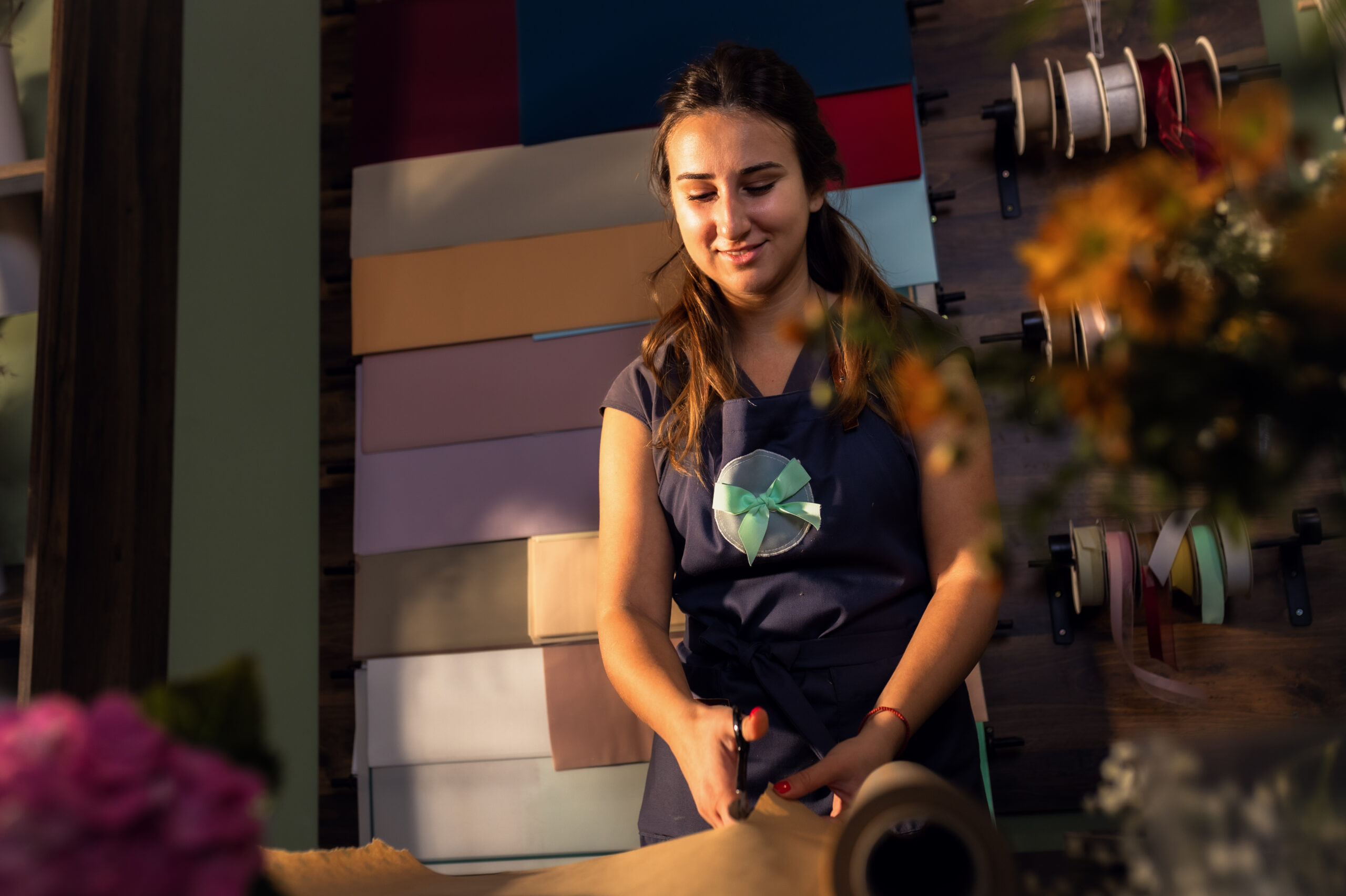
Vegan Fabrics
Introduction
In recent years, the fashion industry has undergone a remarkable transformation as consumers increasingly demand products that align with their ethical values and environmental concerns. At the forefront of this revolution is the meteoric rise of vegan fabrics—materials created without the use of animal products or byproducts. These innovative textiles are changing how we think about fashion, offering sustainable and cruelty-free alternatives that don’t compromise on quality, durability, or style.
What Are Vegan Fabrics and Why Are They Gaining Popularity?
Vegan fabrics encompass a wide range of materials produced without any animal involvement, making them a compassionate choice for the conscientious consumer. Unlike traditional textiles like leather, wool, silk, and fur, vegan fabrics rely on plant-based fibers, recycled materials, or innovative synthetic alternatives that mimic the properties of animal-derived textiles.
The growing popularity of these materials stems from several converging factors:
- Increased awareness of animal welfare issues in traditional textile production
- Growing environmental consciousness among consumers and brands
- Technological advancements enabling better quality alternative fabrics
- Celebrity endorsements and mainstream adoption of vegan fashion
- Rise of sustainable and ethical consumer movements demanding transparent supply chains
As younger generations wield increasing purchasing power, their preference for brands that reflect their values has accelerated the vegan fabric revolution. According to recent market research, the global vegan leather market alone is projected to reach $89.6 billion by 2025, with an annual growth rate of 49.9%.
Common Types of Vegan Fabrics Revolutionizing Fashion
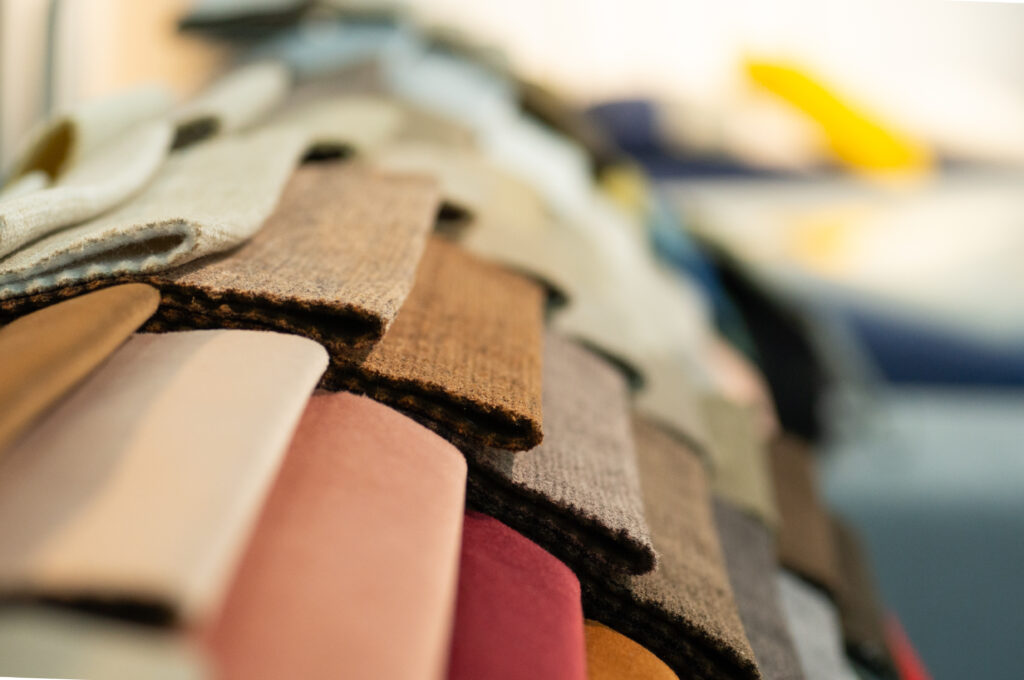
Plant-Based Vegan Leather Alternatives
Pineapple Leather (Piñatex)
One of the most innovative developments in vegan textiles comes from an unexpected source—pineapples. Piñatex, developed by Dr. Carmen Hijosa, is created from pineapple leaf fibers, a byproduct of pineapple harvesting that would otherwise go to waste. This ingenious material:
- Repurposes agricultural waste that would otherwise be burned
- Provides additional income to farming communities
- Creates a durable, flexible material with a natural leather-like texture
- Requires significantly less water and produces less pollution than animal leather
Major brands including Hugo Boss, H&M, and Nike have incorporated Piñatex into their collections, signaling its acceptance in mainstream fashion.
Apple Leather Vegan Fabrics
Another fruit-based innovation, apple leather utilizes the waste from apple juice and compote production. By combining apple waste with polyurethane, manufacturers create a material that closely resembles animal leather in both appearance and performance characteristics. This bio-based vegan leather:
- Reduces industrial food waste
- Decreases reliance on petroleum-based materials
- Creates a water-resistant, durable product
- Features the supple texture consumers expect from traditional leather
Luxury brands like Tommy Hilfiger have embraced apple leather for their sustainable collections, demonstrating its viability as a premium material.
Mushroom Leather (Mycelium)
Perhaps the most promising development in vegan fabrics comes from the fungal kingdom. Mycelium, the root structure of mushrooms, can be grown into customized shapes and textures that remarkably resemble animal leather. Companies like Bolt Threads with their Mylo™ material are revolutionizing luxury fashion by:
- Growing mycelium in controlled environments with minimal resources
- Producing leather alternatives that are biodegradable
- Creating materials that match or exceed animal leather in durability
- Offering customizable textures and finishes based on growth conditions
Stella McCartney, Adidas, and Lululemon have formed partnerships with mycelium leather producers, indicating the material’s significant potential to disrupt the traditional leather market.
Innovative Cellulose-Based Vegan Fabrics
Tencel and Lyocell
These wood-based fabrics represent a significant breakthrough in sustainable textiles. Made from sustainably harvested eucalyptus, beech, and other trees, Tencel and Lyocell offer remarkable benefits:
- Production in a closed-loop system that recycles 99% of water and solvents
- Biodegradability at end of life
- Exceptional breathability and moisture management
- Silky soft texture that rivals traditional silk
The versatility of these fabrics has led to their adoption across fashion categories from activewear to luxury apparel.
Orange Fiber
Italian company Orange Fiber has pioneered a method to transform citrus juice byproducts into a silk-like fabric. This innovative material:
- Diverts thousands of tons of citrus waste from landfills
- Creates a silky, lightweight fabric with natural sheen
- Can be blended with other materials for different applications
- Has been featured in collections by Salvatore Ferragamo and H&M
As the fashion industry seeks alternatives to silk, Orange Fiber represents a compelling sustainable option with minimal environmental impact.
Recycled and Upcycled Fabrics
Recycled PET (rPET)
One of the most widespread vegan fabrics comes from an unexpected source—plastic bottles. Recycled polyethylene terephthalate (rPET) transforms plastic waste into versatile textiles by:
- Diverting plastic from oceans and landfills
- Consuming 30-50% less energy than virgin polyester production
- Creating durable, washable fabrics suitable for numerous applications
- Reducing reliance on petroleum for new synthetic fibers
Brands from Patagonia to Adidas have embraced rPET, with some collections incorporating ocean plastic specifically to raise awareness about marine pollution.
Vegan Fabrics – Econyl
This regenerated nylon, made from fishing nets, fabric scraps, carpet flooring, and industrial plastic, represents a circular approach to fabric production. Econyl offers impressive sustainability credentials:
- Reduces waste in oceans and landfills
- Can be recycled infinitely without quality loss
- Reduces the carbon footprint of nylon by up to 90%
- Performs identically to virgin nylon in durability and elasticity
Swimwear brands particularly value Econyl for its resilience against chlorine, saltwater, and UV radiation, making it ideal for swimsuits that last multiple seasons.
Environmental Benefits of Choosing Vegan Fabrics
Reduced Carbon Footprint
The production of animal-derived materials contributes significantly to greenhouse gas emissions. Livestock farming alone accounts for approximately 14.5% of global greenhouse gas emissions according to the Food and Agriculture Organization of the United Nations. By contrast, most vegan fabrics have substantially lower carbon footprints:
- Organic cotton produces 46% less CO₂e than conventional cotton
- Plant-based leathers typically generate 33-95% fewer carbon emissions than animal leather
- Recycled fabrics can reduce carbon emissions by up to 80% compared to virgin materials
As brands and consumers become more climate-conscious, the carbon advantages of vegan fabrics make them increasingly attractive options for sustainable fashion collections.
Water Conservation
Traditional textile production is notoriously water-intensive. For example:
- Producing one kilogram of cotton requires approximately 20,000 liters of water
- Leather tanning consumes massive quantities of water and contaminates local water supplies
- Wool processing includes multiple water-intensive cleaning and treatment steps
Many vegan fabrics offer dramatic improvements in water efficiency:
- Hemp requires 50% less water than conventional cotton
- Lyocell production recycles 99.5% of process water
- Pineapple and apple leather require minimal additional water beyond what’s used in fruit production
In regions experiencing water stress, shifting to less water-intensive vegan fabrics represents a significant opportunity to reduce fashion’s hydrological footprint.
Reduced Chemical Pollution
Conventional textile production involves numerous toxic chemicals that threaten ecosystems and human health. The leather industry in particular uses chromium, formaldehyde, and other hazardous substances in the tanning process. By contrast, many vegan fabrics:
- Utilize non-toxic dyes and processing chemicals
- Avoid the heavy metals associated with leather tanning
- Employ closed-loop manufacturing systems that prevent chemical release
- Use organic certification standards that prohibit harmful pesticides and additives
As consumers become more aware of the chemical impact of their clothing choices, vegan fabrics with transparent and less toxic production methods gain market advantage.
Challenges and Future Developments in Vegan Fabrics
Current Limitations
Despite their numerous advantages, vegan fabrics still face challenges that the industry is working to overcome:
- Biodegradability concerns: Some synthetic vegan alternatives, particularly those incorporating polyurethane or PVC, don’t biodegrade and may release microplastics during washing.
- Scale and cost issues: Many innovative plant-based materials remain relatively expensive and limited in production capacity compared to conventional fabrics.
- Performance gaps: While improving rapidly, some vegan alternatives don’t yet match all the performance characteristics of their animal-derived counterparts.
- Greenwashing risks: As vegan fabrics gain popularity, misleading marketing claims about sustainability credentials have become more common.
Promising Innovations on the Horizon for Vegan Fabrics
The future of vegan fabrics looks exceptionally bright, with several groundbreaking developments poised to address current limitations:
Bio-Based Synthetic Polymers
Researchers are developing polyesters and nylons derived from plant sugars rather than petroleum, offering biodegradable alternatives to traditional synthetic fabrics. These materials maintain the performance characteristics consumers expect while dramatically reducing environmental impact.
Advanced Mycelium Technologies
Next-generation mycelium materials are being engineered with enhanced durability, water resistance, and specialized properties. Some developers are creating programmable mycelium that can be grown to exact specifications, potentially revolutionizing personalized fashion.
Agricultural Waste Transformation
Beyond pineapple and apples, researchers are exploring dozens of agricultural waste streams—from coffee grounds to banana peels—as potential fabric sources. These approaches align circular economy principles with fashion production by converting waste into valuable materials.
Algae-Based Textiles
Several startups are developing textiles derived from algae, which can be grown with minimal resources and actually absorb carbon dioxide during production. These materials offer exceptional sustainability credentials and novel aesthetic properties for designers.
How to Incorporate Vegan Fabrics into Your Wardrobe
Reading Labels and Identifying Vegan Materials
Becoming a conscious consumer starts with understanding how to identify vegan fabrics when shopping:
- Look for explicit “vegan certified” or “animal-free” labeling
- Check composition tags for plant-based materials like cotton, linen, hemp, or innovative alternatives
- Research brands’ material sourcing policies on their websites
- Use apps like Good On You or Wear The Change that rate brands on animal welfare criteria
- Be wary of generic “eco-friendly” claims without specific material information
Many brands now provide detailed material information and sustainability metrics directly on product pages, making it easier than ever to make informed choices.
Caring for Vegan Fabrics to Maximize Longevity
Proper care significantly extends the lifespan of vegan fabrics, enhancing their sustainability benefits:
- Follow specific care instructions for each material type
- Use cool water washing and natural detergents to preserve fibers
- Air dry when possible to reduce energy consumption and fiber damage
- Store plant-based leathers away from direct sunlight to prevent fading
- Apply appropriate conditioners to maintain the flexibility of vegan leathers
- Repair small damages promptly to prevent further deterioration
By extending the wearable life of vegan garments, consumers multiply the environmental benefits of their purchasing decisions.
Brands Leading the Vegan Fabric Movement
Several pioneering brands have made vegan fabrics central to their identity:
- Stella McCartney: A luxury pioneer in vegan fashion, consistently innovating with mushroom leather, recycled nylon, and plant-based alternatives
- Pangaia: Combines science and sustainability with materials like seaweed fiber, wildflower down alternatives, and grape leather
- Veja: Creates popular sneakers using innovative materials like C.W.L. (Corn Waste Leather) and B-mesh made from recycled plastic bottles
- Matt & Nat: Specializes in vegan leather accessories made from recycled materials with recycled nylon linings
- Reformation: Offers transparent sustainability reporting alongside clothing made from Tencel, organic cotton, and recycled fabrics
These brands demonstrate that vegan fabrics can succeed at all market levels, from affordable basics to luxury statement pieces.
Conclusion: The Future Is Vegan
The rise of vegan fabrics represents more than just a passing trend—it signals a fundamental rethinking of how textiles are produced and consumed. As technological innovation continues to improve the quality, availability, and cost of these materials, we can expect their adoption to accelerate across the fashion industry.
For consumers, the expanding range of vegan fabrics means greater choice without compromise. Today’s vegan textiles offer performance, aesthetics, and durability that rival or exceed their animal-derived counterparts, all while aligning with values of environmental protection and animal welfare.
Fashion brands that embrace these materials gain competitive advantage through reduced environmental risk, positive brand associations, and resilience against increasing regulation of high-impact materials. The most forward-thinking companies are already integrating vegan fabrics into their core product lines rather than treating them as specialty offerings.
As we look toward a more sustainable fashion future, vegan fabrics will undoubtedly play a central role in transforming one of the world’s most resource-intensive industries into a force for positive change. By choosing these innovative materials, we can all contribute to this important transformation—one garment at a time.

Minimalist Outfits
Minimalist Outfits: The Ultimate Guide to Effortless Style
What Are Minimalist Outfits?
At its core, a minimalist outfit is all about simplicity, functionality, and timelessness. These outfits focus on:
- Neutral colors – Think black, white, gray, beige, and navy.
- Clean lines – Simple silhouettes without unnecessary embellishments.
- High-quality fabrics – Well-made pieces that stand the test of time.
- Versatility – Clothes that can be mixed and matched effortlessly.
Minimalist fashion isn’t boring—it’s intentional. When done right, it looks polished, put-together, and effortlessly stylish.
Why Choose Minimalist Outfits?
1. Saves Time and Energy
2. Long-Term Savings
Fast fashion trends come and go, but minimalist pieces never go out of style. Investing in timeless basics means you won’t have to replace your wardrobe every season.
3. Elevates Your Style
A cluttered closet often leads to messy, mismatched outfits. But with a minimalist wardrobe, every piece complements the others, making you look effortlessly chic without even trying.
4. Eco-Friendly Choice
Minimalism naturally leans towards sustainability. By focusing on quality over quantity, you reduce waste and support ethical fashion choices.
How to Build a Minimalist Wardrobe
1. Declutter Your Closet
- Have I worn this in the past year?
- Does this fit my personal style?
- Can I wear this in multiple ways?
If the answer is no, it’s time to let it go.
2. Stick to a Neutral Color Palette
Minimalist outfits thrive on neutral shades because they’re easy to mix and match. That doesn’t mean your wardrobe has to be all black and white—earthy tones, soft blues, and muted pastels work beautifully too.
3. Invest in High-Quality Basics
Every minimalist wardrobe should include a few staple pieces:
- White button-down shirt – A classic piece that works for both casual and formal occasions.
- Black or navy blazer – Instantly elevates any outfit.
- Well-fitted jeans – A must-have for effortless style.
- Plain t-shirts and tank tops – Perfect for layering.
- Tailored trousers – A chic alternative to jeans.
- Classic sneakers and loafers – Comfortable yet stylish footwear.
4. Choose Versatile Pieces
Before buying anything new, ask yourself: “Can I wear this in at least three different ways?” If the answer is yes, it’s a keeper. The two-piece set below is super affordable and can be styled in numerous ways. You can pair this with some sneakers, a tote bag, and baseball cap for a casual look. Add heels, some statement jewelry and a clutch for a classier look!
5. Focus on Fit and Fabric
A well-fitted outfit always looks more put-together. Invest in high-quality fabrics like cotton, wool, and linen that feel good and last longer.
Minimalist Outfits for Every Occasion
1. Casual Minimalist Look

Shop the Look: Slouchy Bag | Sunglasses | Sleeveless Cropped Knit Cardigan | Levi Jeans
2. Office-Ready Minimalist Outfit
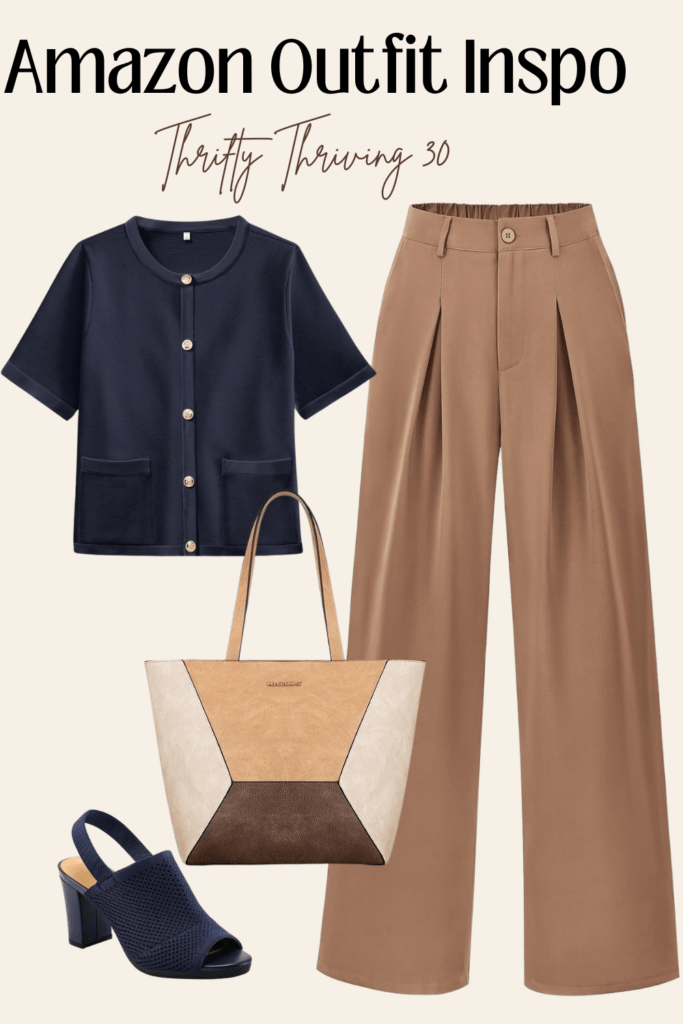
Shop the Look: Short Sleeve Cardigan Sweater | Tote Bag | High Waist Palazzo Pants | Chunky Block High Heel Shoe
3. Minimalist Weekend Errands Outfit
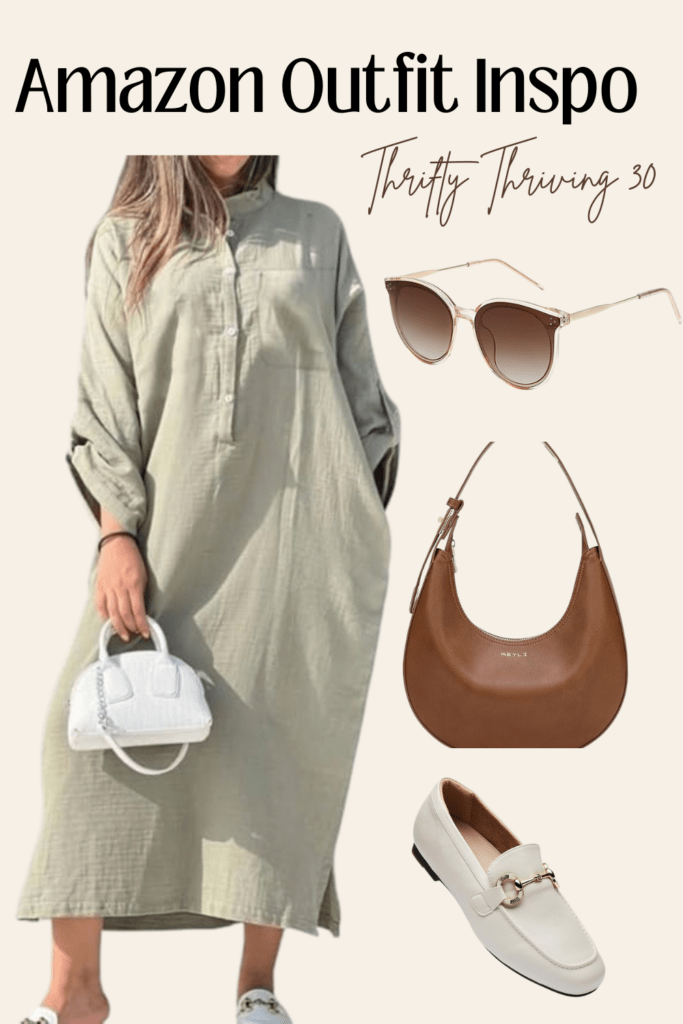
Shop the look: Dress | Sunglasses | Shoulder Bag | Slip on Shoe
4. Preppy Minimalist Outfit
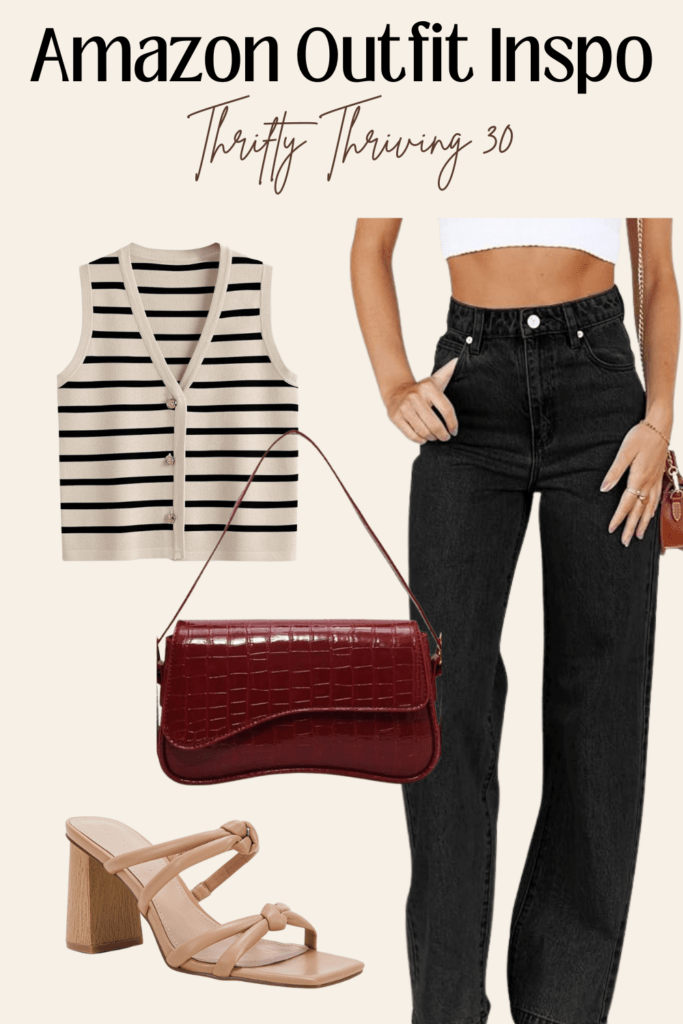
Shop the Look: Shoulder Bag | Jeans | Sweater Vest | Open Toe Heeled Sandal
5. Everyday Minimalist Outfit
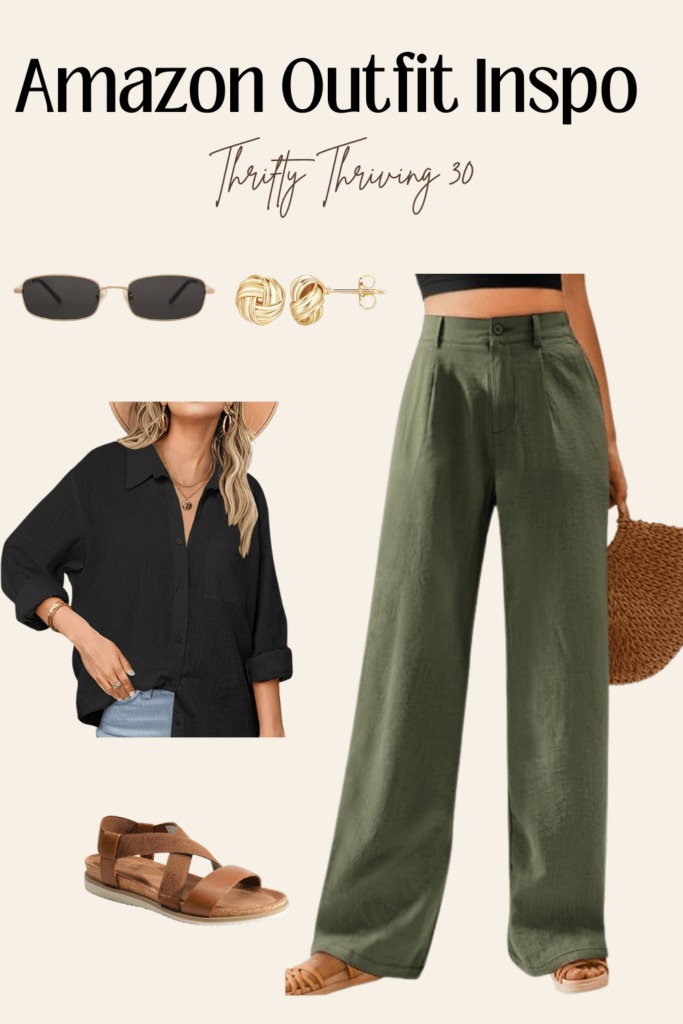
Shop the Look: Blouse | Gold Stud Earrings | Wide Leg Pants | Low Wedge Sandals
Common Myths About Minimalist Outfits
1. Is Minimalist Fashion Just Black and White?
Nope! While neutral colors dominate, you can add subtle pops of color like olive green, rust, or deep blue for variety.
2. Do Minimalist Outfits Mean Dressing Boring?
Absolutely not. Minimalism is about refined simplicity, not a lack of style. The key is in the details—textures, layering, and accessories.
3. Is Minimalist Fashion Expensive?
Not necessarily. While high-quality items may cost more upfront, they last longer, saving you money in the long run.
4. Can Minimalist Outfits Work for All Body Types?
Yes! The beauty of minimalist fashion is its adaptability. Tailored fits and clean lines complement all shapes and sizes.
FAQs
1. How do I start dressing in a minimalist style?
Begin by decluttering your wardrobe, sticking to neutral colors, and investing in versatile, high-quality basics.
2. What brands are best for minimalist fashion?
Some great minimalist brands include Everlane, COS, Uniqlo, and The Frankie Shop.
3. Can I still follow trends while keeping a minimalist wardrobe?
Of course! Just be selective—incorporate trendy pieces that align with your minimalist aesthetic rather than chasing every new fad.
4. How many pieces should be in a minimalist wardrobe?
There’s no strict number, but most minimalist wardrobes have around 30-50 pieces, including shoes and accessories.
Conclusion
Minimalist outfits aren’t about sacrificing style—they’re about refining it. With a carefully curated wardrobe, you’ll save time, money, and effort while looking effortlessly polished every day.
So, ready to embrace the less-is-more philosophy? Start building your minimalist wardrobe today and experience the freedom that comes with it.
Want more style tips? Stay tuned for more fashion insights!